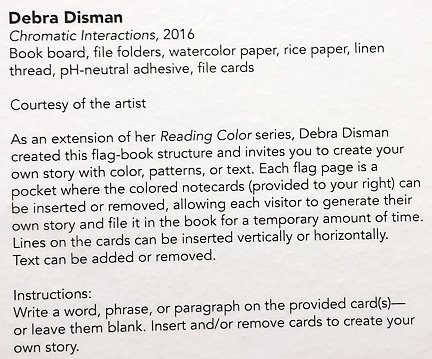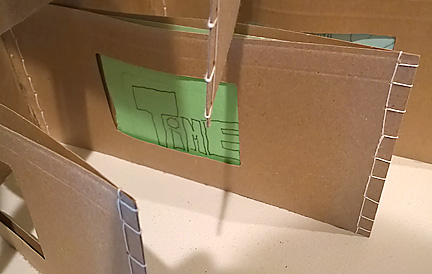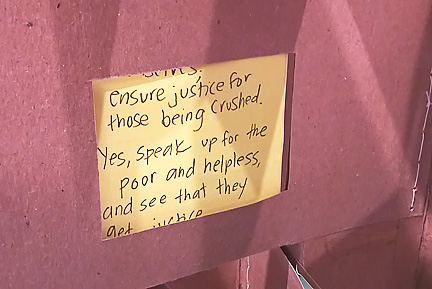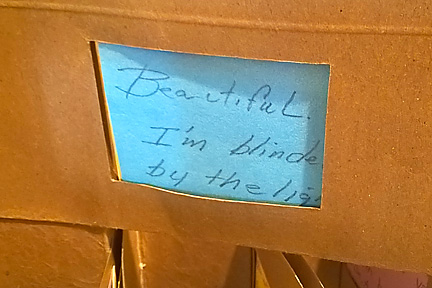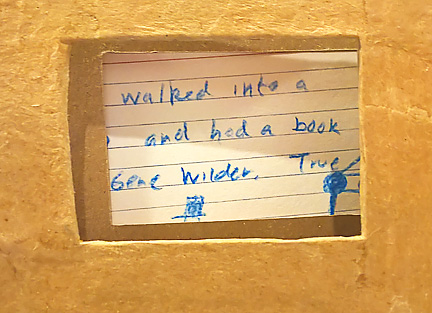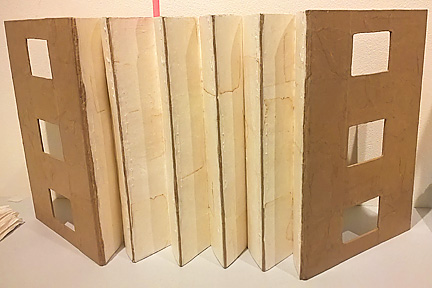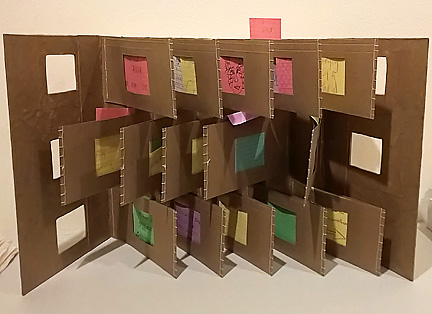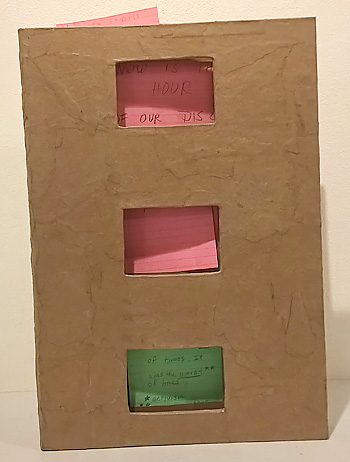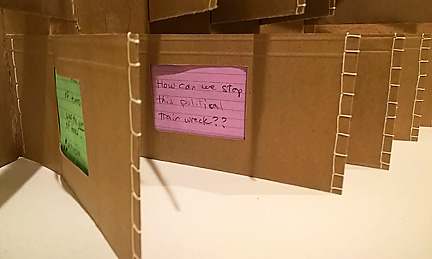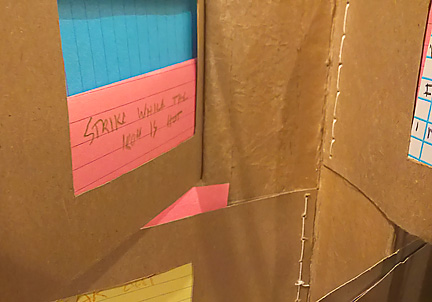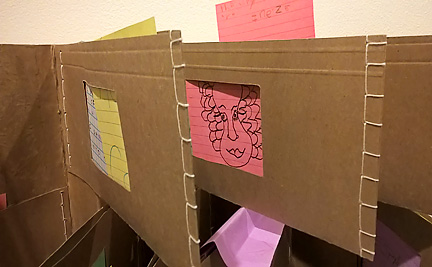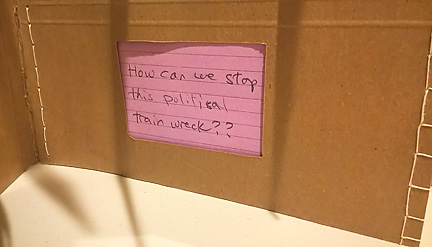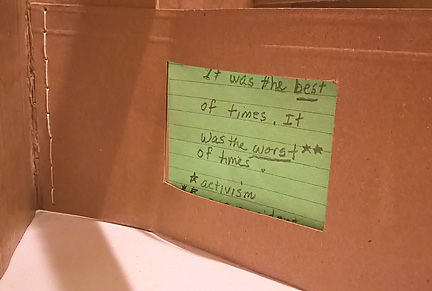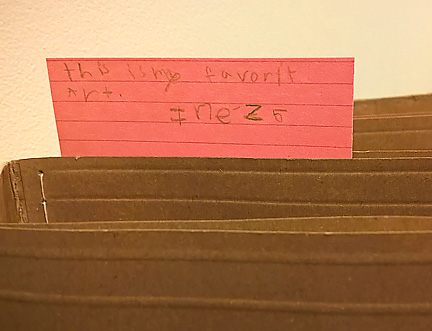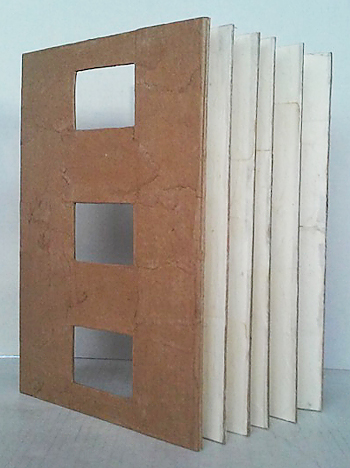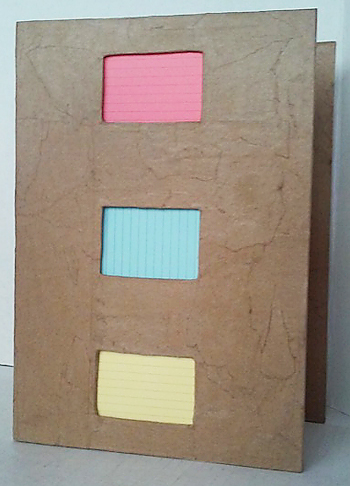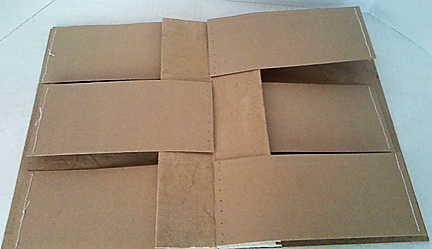A Taste for Texture II
I have a passion for texture…don’t you? Ideally texture you can actually touch and feel, but visual texture too. Texture, the quality of the tactile, “HAPTIC“…these inspired this body of work.
Inspired to create a series of textural, textual, and textured Flag Books, I used a series of simple techniques to get the “haptic” feel I craved.
i think texture is like that. We crave it. The sense of touch is elemental. Primal. it is not enough to see or hear something we are drawn to. We are compelled to feel it…one way or another.
 I used torn scraps of tissue paper applied with no other then Mod Podge, to create the texture on repurposed cardboard.
I used torn scraps of tissue paper applied with no other then Mod Podge, to create the texture on repurposed cardboard.
 The collaged strip of patterned paper is stitched with jute cord, which also holds a piece of repurposed bead necklace which is strung onto it.
The collaged strip of patterned paper is stitched with jute cord, which also holds a piece of repurposed bead necklace which is strung onto it.
 The flags are cut from a stiff window shade-like material, and they are attached to an accordion folded spine, repurposed from a brochure about Richard Neutra‘s VDL House. The spine is covered with transparent fabric ribbon. The text: “A STITCH IN TIME SAVES 9“, is, yes, stitched on to the flags with hemp cord. It is also the name of this piece.
The flags are cut from a stiff window shade-like material, and they are attached to an accordion folded spine, repurposed from a brochure about Richard Neutra‘s VDL House. The spine is covered with transparent fabric ribbon. The text: “A STITCH IN TIME SAVES 9“, is, yes, stitched on to the flags with hemp cord. It is also the name of this piece.
 For the piece, “Narrow Bridge“, a similar process was used, with collaged images on the front, punctured by slightly uneven stitches that add another layer of both visual and tactile texture to the surface of the front and back covers.
For the piece, “Narrow Bridge“, a similar process was used, with collaged images on the front, punctured by slightly uneven stitches that add another layer of both visual and tactile texture to the surface of the front and back covers.
 The repurposed cover boards were were textured with torn tissue paper, and adhered with Mod Podge, and a thinner tissue was used to add solidity, strength and presence to the tagboard accordion spine.
The repurposed cover boards were were textured with torn tissue paper, and adhered with Mod Podge, and a thinner tissue was used to add solidity, strength and presence to the tagboard accordion spine.
 The same window shade-like material was used for the flags, which are stitched (embroidered?) in linen thread with the text, “”The whole world is A narrow bridge The important thing is not to Fear“–the essence of which was penned by the great Reb Nachman of Breslov The inside covers are collaged with fabric scrap.
The same window shade-like material was used for the flags, which are stitched (embroidered?) in linen thread with the text, “”The whole world is A narrow bridge The important thing is not to Fear“–the essence of which was penned by the great Reb Nachman of Breslov The inside covers are collaged with fabric scrap.
 “Thin Ice” wears its title on its back cover. The repurposed cover boards are textured with crumpled scraps of brown paper bags, adhered, once again, by the inimitable Mod Podge. The accordion spine was textured and strengthened with torn tissue fragments, and the entire surface was painted in shimmering washes of silvery metallic paint.
“Thin Ice” wears its title on its back cover. The repurposed cover boards are textured with crumpled scraps of brown paper bags, adhered, once again, by the inimitable Mod Podge. The accordion spine was textured and strengthened with torn tissue fragments, and the entire surface was painted in shimmering washes of silvery metallic paint.
 The front cover is stitched with a sort of maze, all stitching done with the thread pulled from the detailing on a decorative pillow that had seen better days. (Saved the pillow, repurposed the edging…)
The front cover is stitched with a sort of maze, all stitching done with the thread pulled from the detailing on a decorative pillow that had seen better days. (Saved the pillow, repurposed the edging…)
 The text, or, messaging, “if you are going to skate on thin ice, you had better be able to walk on water”, is stitched to the flag pages (made from the same type of window shade-like material) with metallic thread, or cord.
The text, or, messaging, “if you are going to skate on thin ice, you had better be able to walk on water”, is stitched to the flag pages (made from the same type of window shade-like material) with metallic thread, or cord.
Good advice, I think, for any of us…
 Cards and pencils nearby encourage patrons to become participants.
Cards and pencils nearby encourage patrons to become participants. “Windows” are uniform, to allow messages to show/shine through.
“Windows” are uniform, to allow messages to show/shine through. Some wrote stories, employing the ancient “There Once Was…”
Some wrote stories, employing the ancient “There Once Was…”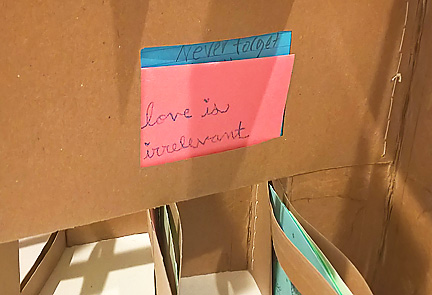 Some messages came together to create new meanings and inadvertent poetry.
Some messages came together to create new meanings and inadvertent poetry.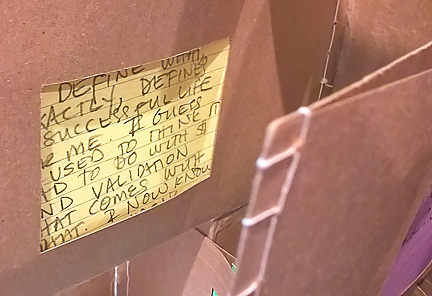 Some seemed to write a journal entry,
Some seemed to write a journal entry,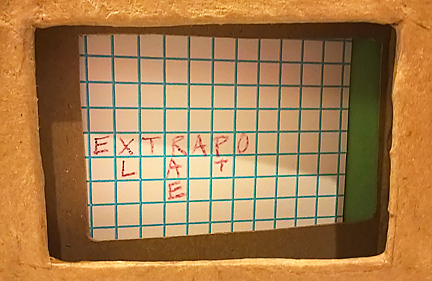 Some got creative with the grid,
Some got creative with the grid,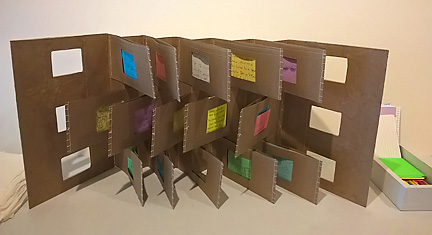 ALL created with the form.
ALL created with the form.